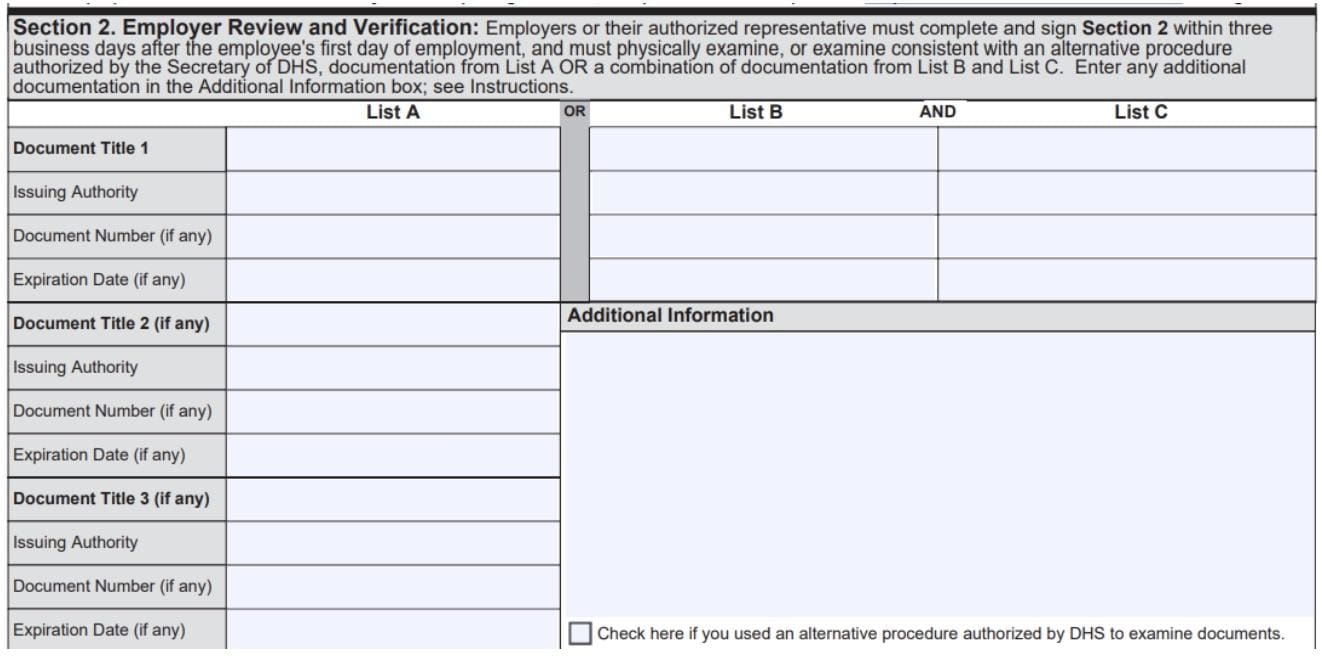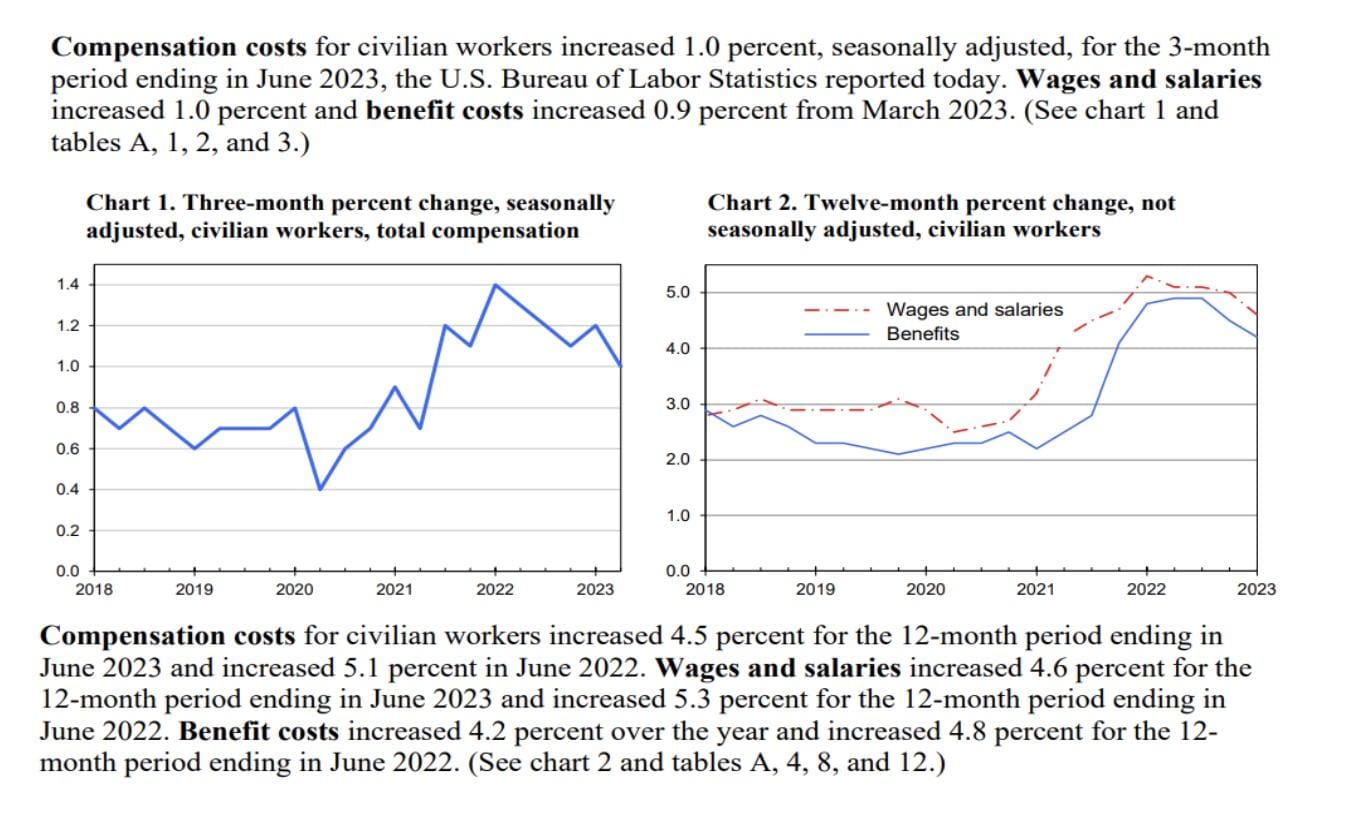The U.S. Citizenship and Immigration Services (USCIS) announced that starting August 1, 2023, employers can start using the New I-9 Form (I-9 Form) to verify a candidate’s identity and authorization to work in the United States. All employers must convert to the new I-9 Form by November 1, 2023. This form can be downloaded from the USCIA website at www.uscis.gov/i-9.
Additionally, USCIS announced new regulations that allow employers to verify identity and authorization to work using one of two methods: Virtual Alternative Procedure and the In-Person Method.
The new Virtual Alternative Procedure is available for qualified employers only. A qualified employer is a participant in good standings using the E-Verify system for all new hires. Within three days of hire, a qualified employers can verify identity and eligibility can use a video connection with the new employee as follows:
1. First the new employee must submit the front and back of the documents he or she is using to verify identity and work authorization from Lists A, B and C to the employer;
2. The employer must review the documents to ensure that they are clear and that they “reasonably appear to be genuine and related to the person”;
3. The employer arranges with the new employee to conduct a live video interview. During that interview, the new employee must be clearly visible to the employer representative and present the same documents he or she submitted previously for the employer’s review during the video interaction;
4. The employer completes Section 2 of the new I-9 Form and indicates in the box below Additional Information that it is using the alternative procedure to verify identify and work authorization; and

5. The employer must then store the front and back of the documents provided by the new employee and must make those records available to the federal government for audit or investigative purposes.
Employers can continue to use their existing verification process so long as it converts to the new I-9 Form by November 1, 2023.
A unique feature about today’s workplace is that employers probably have employees representing five generations in their workplace. The Silent Generation (1928 to 1945), Baby Boomers (1950-1960), Gen X (1965-1980), Millennials (1982-2000), and the newest addition Gen Z (1997-2012) all have had different childhood experiences which informs their understanding and expectation from the workplace. Each worker cohort has different relationships to the workplace and navigating the differences can be daunting for employers. The best advice is not to stereotype employees in each of the groups, not all Baby Boomers are afraid of technology and not all Gen Z are stressed out and looking for their next job. Rather consider your own employees in these generational cohorts and learn about their work styles (structure versus flexibility), how they react to authority (unimpressed or versus respectful of hierarchy), and their loyalty (to the company, to the leader or maybe to the work experience itself). Armed with this information, you might realize that making adjustments to your policies provides a more productive workplace, consider whether you need to develop or refresh your diversity and inclusion practices, highlight your company’s involvement in the community and get your employees involved, review your development planning and feedback processes for your employees and update them as required, and most importantly communicate, communicate and communicate more to make sure all employees irrespective of their work cohort know the value they bring to your company.
It is probably not surprising to anyone that in the post COVID workplace employers are struggling to hire qualified people, at a reasonable wage/salary rate, and to do so in a timely manner. According to the Josh Bersin’s Time-to-Hire Factbook, on average it takes an employer 44 days to hire employees (https://joshbersin.com/time-to-hire-benchmark-factbook/). Some industry experts have found that the actual time to hire is closer to 50 days and for “hot roles” up to 60 days. There are many reasons for this.
1. Market Conditions – presently there are approximately 14,000 open positions and 10,000 people receiving unemployment in Nevada. In short, there are less people actively seeking employment. As well as employees who are seeking higher compensation. Wage growth in 2022 was 3.6 %, but increased to 4.7% in June of 2023 and benefits cost is up 4.2% for the same period and employers cannot adjusted to the increased wage pressure.

2. COVID’s Great Resignation – in 2021, over 19 million employees departed the workplace for obvious reasons like COVID and health concerns, lack of family care options as the economy reopened, but less obvious is the gap between employers and employees on what the workplace should look like in 2023. Employees have become more selective about what they want from the workplace and are less likely to accept a role change purely for money, benefits, and perks.
3. Childcare options – Child Care Aware of America reports that the average cost for childcare in Reno is between US$9,637 (toddler) to US$10,326 (infant) and can go as high as US$13,383 for center-based care. This represents 14% of median income for a married couple and 37% of a single parent household. From a pure economic standpoint, employees are more selective about the hours and locations where they work.
4. Employee Workplace Expectations – COVID measures during the pandemic required that most employees work remotely. Employees have grown accustomed to this work model and remain hesitant to return full-time to in-person employment. Employers seeking to hire employees that report to a physical workplace must plan on longer time-to-hire for their open roles.
5. Voluntary Turnover – according to a September 2021 McKinsey survey at least 40% of the employees surveyed were somewhat likely to quit in the next 3 to 6 months and 36% of those that did quit did so without having a new job to go to. While recent 2023 workforce statistics suggest that increasingly employees are returning to the workplace, employers should be mindful that these employees are more likely to leave a job that is not meeting their expectations putting the employer back into hiring mode.
If you have any questions regarding E-Verify, the I-9 Form or the existing or new verification process please reach out to TAC at (775) 853-5433 and we can assist you to update your verification and records storage processes.
Fax: (775) 853-5466
HOURS OF OPERATION
Monday - Friday:
8:00 AM - Noon | 1:00 PM - 5:00 PM
Saturday - Sunday:
CLOSED